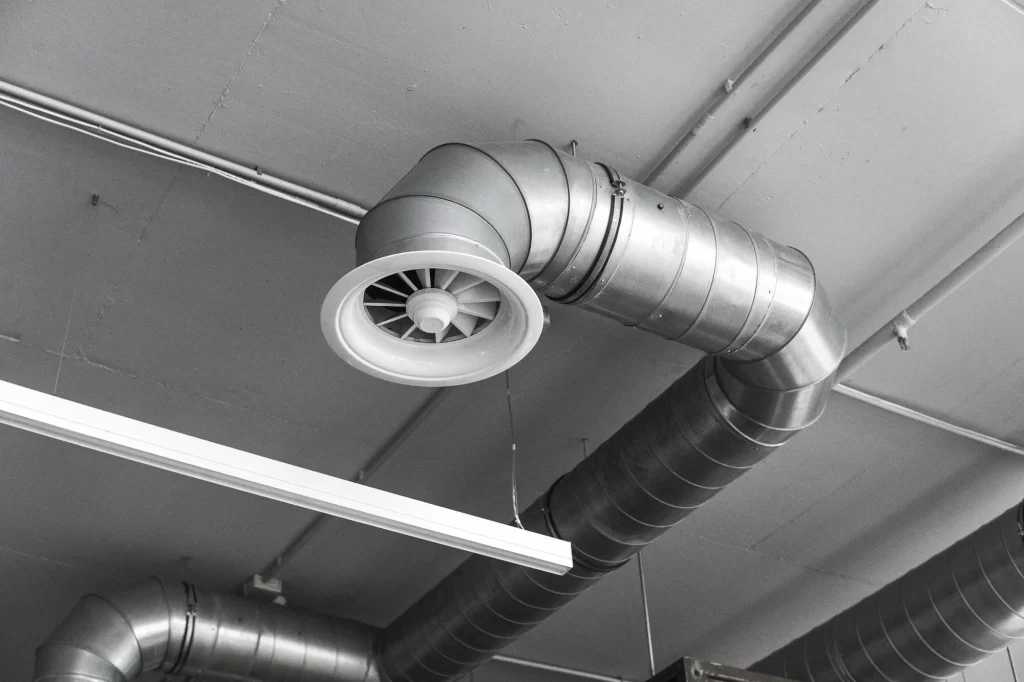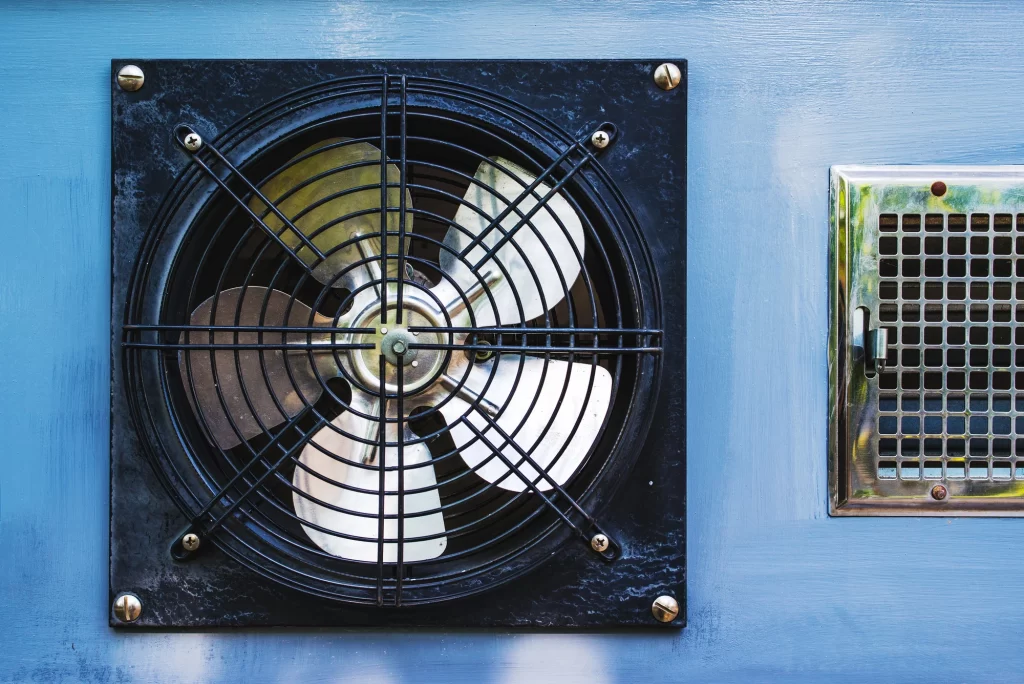Maximize Comfort with a Garage Exhaust Fan: The Ultimate Guide to Garage Ventilation fan, Wall Exhaust, and Energy-Efficient Garage Cooling Solutions
Garages often become hot, stuffy, and poorly ventilated spaces, making it uncomfortable to work in or store items. Installing an exhaust fan, combined with proper insulation and attic ventilation, is one of the most effective ways to tackle heat and air quality issues. Adding a grill to the system ensures optimal airflow, keeping your garage cool and fresh. Whether you’re using your garage as a workshop, for vehicle storage, or as a general storage space, a well-designed ventilation system can make a significant difference. In this guide, we’ll cover everything you need to know about garage exhaust fans, their benefits, and how to choose and install the best option for insulate your garage.

Why Ventilation is Essential for Your Garage fan
Proper ventilation in your garage is essential for many reasons. It improves air circulation, reduces harmful fumes, and helps lower temperatures, especially during warmer months. Moreover, garages are often susceptible to heat buildup, which can cause stored items, vehicles, and tools to degrade faster. Effective ventilation removes stagnant air, replacing it with cooler, fresher air, making the environment more comfortable and safe.
What is a Garage Exhaust Fan?
A garage exhaust fan is a mechanical device that removes hot, stale, or contaminated air from a space and replaces it with cooler air. These fans are particularly useful in garages where heat, fumes, and moisture tend to accumulate. Whether mounted on walls or roofs, exhaust fans provide a continuous flow of fresh air, improving both comfort and safety.
Types of Garage Cooling and Ventilation Systems
There are various garage ventilation systems to choose from, depending on your needs and the layout of your garage. Let’s explore the main types:
- Wall-Mounted Exhaust Fans: Installed on the exterior walls of the garage, these fans pull air out of the garage and bring fresh air in. They are ideal for keeping garages cool and ventilated.
- Roof-Mounted Exhaust Fans: These fans are installed on the roof, perfect for drawing out rising hot air, which tends to collect near the ceiling.
- Inline Exhaust Fans: Placed within ducts, inline fans help to increase airflow in large garages where a single fan may not be sufficient. They boost the performance of wall or roof-mounted systems.
| Type of Exhaust Fan | Best for | Installation Difficulty | Cost | Effectiveness |
|---|---|---|---|---|
| Wall-Mounted Fan | Small-Medium Garages | Moderate | $50-$200 | Good |
| Roof-Mounted Fan | Large Garages | Difficult | $100-$400 | Excellent |
| Inline Fan | Large Garages | Moderate-Difficult | $100-$300 | Excellent |
How Does a Garage Exhaust Fan Work?
The primary function of a garage exhaust fan is to push out hot and stale air while drawing in cooler air, reducing the internal temperature and improving air quality. These fans work by creating negative pressure inside the garage, causing fresh air to flow in through vents, doors, or windows.
CFM (Cubic Feet per Minute) Explained
The capacity of a garage exhaust fan is measured in cubic feet per minute (CFM), which indicates how much air the fan can move in one minute. To determine the CFM needed for your garage, calculate the volume of your garage (length × width × height) and multiply by 20 for optimal air circulation.
| Garage Size (sq ft) | Recommended CFM |
|---|---|
| Up to 500 sq ft | 400-600 CFM |
| 500-1000 sq ft | 600-1000 CFM |
| 1000+ sq ft | 1000+ CFM |
Benefits of Using a Garage Exhaust Fan
- Cooling: By removing hot air, an exhaust fan helps keep your garage temperature manageable, especially during summer.
- Improved Air Quality: Exhaust fans help remove harmful fumes from vehicles, chemicals, and paint, providing a safer environment.
- Moisture Control: Proper ventilation reduces humidity and moisture buildup, preventing mold and rust from forming on your tools and stored items.
Choosing the Right Exhaust Fan for Your New Garage
When choosing an exhaust fan for your new garage building, consider factors such as garage size, installation options, and your specific needs. For instance, if your garage has limited wall space, a roof-mounted fan may be more appropriate. Additionally, ensure the fan you choose has enough CFM to ventilate the entire garage efficiently.
Garage Door and Ventilation
The role of your garage door in the ventilation process should not be overlooked. While an exhaust fan pulls out the hot air, having a well-ventilated garage door allows cooler air to flow into the space. Opt for a garage door with built-in vents to complement the exhaust fan system.
How to Choose the Right Exhaust Fan for Your Garage
Choosing the right exhaust fan for your garage involves understanding the size and ventilation needs of your space. If you have an attached garage, a bathroom exhaust fan may seem sufficient, but garages typically require a more powerful vent fan to handle the heat, odors, and potential fumes from vehicles and stored materials. If your garage faces north, you may not experience extreme summer heat, but if your garage gets over 85°F, you’ll want to focus on systems that can handle a ton of air movement.
For larger garages, consider using a direct drive fan, which offers superior airflow and durability compared to belt-driven models. If you’re trying to vent a hot garage, positioning your exhaust vent high on the wall or in the ceiling is ideal to keep it cool by pulling the warm air out. Many wall mount or roof-mounted fans also feature thermostat control, ensuring they turn on when the garage reaches a certain temperature.
Installation and Placement of Garage Exhaust Fans
Proper placement of your garage exhaust fan can significantly affect its efficiency. For instance, positioning the fan mounted in the ceiling or opposite side of the garage from your intake vent will create optimal airflow. Ensuring that fresh air intake is available, perhaps through a ridge vent or garage door, will allow cooler air to replace the hot air being exhausted.
For best results, use a ducted or vent fan to create a dedicated path for airflow, especially in a garage attic. This can help vent heat from the attic space as well. An inlet or ducting system can pull air into the garage effectively while maintaining a more energy-efficient operation.
How Much Power Does Your Garage Fan Need?
One of the key factors in selecting a fan is its power output, measured in CFM (cubic feet per minute). A typical garage exhaust vent needs a fan that can handle around 80 CFM for smaller garages, or up to 600 CFM for larger, hotter spaces. For instance, if your car garage is exposed to a lot of hot air, or you frequently work inside during hot weather, a solar-powered or roof fan might provide a more energy-saving option.
If you prefer a quieter operation, consider a fan that you can hardly hear, as some models provide powerful airflow without excessive noise. When selecting an exhaust hose or ducting system, ensure it’s appropriately sized for the airflow needs of your garage.
How to Optimize Garage Ventilation

In addition to installing a garage exhaust fan, there are other ways to optimize airflow. If your garage has adjacent rooms, ensure that any ducting does not direct air into these spaces to avoid spreading odor or fumes. By installing fire-rated vents and a fresh air intake, you can improve both safety and air quality inside the garage.
For those living in areas with extreme climates, where the garage can get cold in the winter and excessively hot in the summer, using insulation in tandem with ventilation is essential. This combination will help you keep your home comfortable by preventing hot or cold air from transferring between the garage and attic or into living spaces. For better energy savings, consider a solar-powered option that operates independently of your home’s electricity.
Summary
To ensure optimal performance of your garage’s ventilation, installing a combination of solutions can make a significant difference. A whole house fan with a shutter is one such system that works well in larger spaces. When paired with a roof-mounted or solar-powered exhaust system, it can effectively remove hot indoor air and bring in cool air, especially during the summer when temperatures get over 85 degrees. If you like to keep your garage comfortable year-round, opting for energy-efficient systems that rely on ambient air for cooling is a wise choice.
CFM
For smaller garages or those with specific airflow needs, consider a fan with 600 CFM power or higher to circulate and refresh the garage air. It’s important to assess whether you want to cut energy costs by choosing solar-powered systems or standard fans that can be sourced from your local hardware store. If you are trying to accommodate your needs for both ventilation and safety, make sure your setup includes fire-rated vents and exhaust systems.
Proper FANS
Lastly, to keep the ambient conditions stable, focus on installing energy-efficient fans that are roof mounted or designed to work outside the garage to maintain consistent temperatures and safe indoor air. As the fan comes into play, regular maintenance will ensure that it continues to provide cooling without interruption. Ventilation may seem more complex than you originally thought, but with the right tools and planning, it will provide long-term benefits for your garage space. For a wide range of ventilation solutions, visit your local suppliers or reach out to our team for expert advice.
- Exhaust fan power should match the size of your garage, typically ranging from 80 to 600 CFM.
- Proper fan placement, such as a fan mounted in the ceiling or high on the wall, optimizes ventilation.
- Use ducting or vent fans to ensure efficient airflow.
- Consider solar-powered or energy-saving options to reduce energy costs.
- Insulate your garage and incorporate a fresh air intake for effective temperature control.
- Keep safety in mind with fire-rated ventilation and thermostat-controlled exhaust fans for automatic operation.
For more details on specific exhaust fan models or to view examples of ventilation setups, check out our gallery or contact us directly to discuss your needs!
